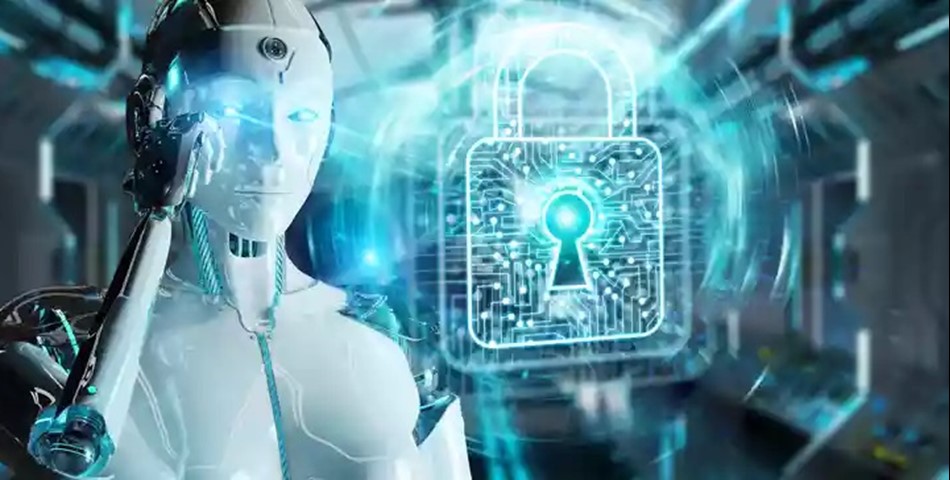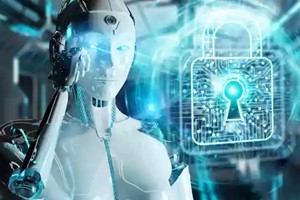What are Security Robots?
In the simplest terms, security robots are any physical or software robots that can guard and provide security to assets. In general terms, there are two main types of security robots – virtual and physical. Physical robots are what you would traditionally imagine security robots to be. They are equipped with all sorts of surveillance equipment and can cover a large area on wheels.
Virtual security is quite another matter. Virtual robots are essentially AI algorithms that can identify and protect your data and devices against malware. Although not conventional robotics, virtual security robots can be invaluable to large corporations that run on collected data, as well as to everyday people who wish to protect themselves from fraud.
Of course, not all security robots fit neatly into either one of these categories, which is why there is a third, hybrid, category of security robots that include both, physical and virtual security protocols.
Physical Security Robots
These robots can be seen as the noble souls that patrol the streets to keep people safe and help the police. The California-based company, Knightscope, has developed the perfect example of this type of robotics with their autonomous surveillance robots.
Knightscope’s robots can patrol the streets in accordance with the local police. They are trained to identify and capture all crime that happens on the streets. These robots are powered by 360-degree surveillance cameras backed by a strong AI model that can detect crime based on visual images. These cameras and the AI model are also operational after dark and even feature face-recognition.
Along with identifying and capturing, Knightscope’s robots can also immediately inform the police of the situation either through a private line or through an audio broadcast. If the police cannot be physically present, the robot can also act as a 2-way intercom. The company has worked with police departments all over the United States and operates on a service-based business model. Knightscope’s protocol is simple: patrol the streets autonomously, identify the crime, capture the crime and call the police.
Despite its uses, a physical security robot may be too conspicuous for certain environments where more subtle but strong security is required. In a situation like this, there are many remote security firms that provide surveillance and protection through remote video monitoring. These AI monitors stream video from the CCTV cameras and similar to guard robots, they also alert the police when criminal activity is detected.
Virtual Security Robots
Unlike physical security robots, virtual security robots do not protect anything which the eye can see. Instead, they protect soft assets, such as data and devices, from being virtually misused.
Most of the time data is stolen while it is being transferred. Think of data as the gold inside a treasure chest. When it’s being transferred, it’s taken out of the treasure chest, making it easier to steal. This is why there are protocols in place, in the form of virtual security robots, which stop this theft from happening.
There is debate on whether these highly evolved AI algorithms can be considered true robotics. The goal of robotics is universally seen as the automation of physical/human processes. While virtual security robots do not automate physical tasks, they do employ many tactics that are fundamental to robotics, such as machine learning and feedback control. Whether they be true robotics or not, it is certainly undisputed that virtual security robots are crucial to global security.
Despite there being some major government and private data protection agencies, the field of data protection itself is ever-changing with new cryptography being developed every day. With the field of quantum cryptography just emerging, this industry is ready for a major take off.
Hybrid Security Robots
Virtual Security is a requirement in any scenario involving technology, even physical security robots. With surveillance robots such as Knightscope’s, one can reason that if the perpetrator can simply hack into the mainframe of the robot, they can get away with their crime. This is prevented through virtual security which is inbuilt into the guard robot’s mainframe as a firewall.
The purpose of virtual security in guard robots, such as the Knightscope, is to block any external signals from penetrating the firewall and controlling the robot. These systems are much more complex than they seem since they can not employ traditional virtual security methods and have to adapt into a hybrid form.
Hybrid security robots make for the strongest automated security possible since they include the benefits of a physical security robot with the protection of virtual security.
Future Applications of Security Robots
There have been some major advancements in the field of automated security systems within the past 5 years. However, despite these advancements, guard robots are not yet ready to fully replace human security. They have many shortcomings that hinder effective law enforcement.
The greatest drawback of guard robots is their inability to confront the perpetrators. In a situation where bodily harm is being inflicted, a guard robot can merely record and report the incident. By the time the police get to the perpetrator, the harm has already been caused. These limitations provide further scope for improvements in the field of physical security automation.
Within the realms of virtual security, the largest niche to expand in is quantum cryptography. Traditional virtual security methods employ mathematical algorithms to ensure software safety. However, with the advent of quantum computing, these algorithms are largely at risk. The goal for virtual security agencies is to fight fire with fire by building quantum cryptography in response.
With fighter guard robots and quantum cryptography right around the corner, the field of automated security is at the brink of a revolution that can provide a much safer future for people to live in.













